Altogether there are seventy-eight organs in the human body. These include vital structures like the heart, lungs, brain, liver, and kidneys, each with specific functions that help maintain life and health. Want to know about what are the 78 organs’ names in the human body and their functions? I have discussed below in detail.
What are the 78 Organs in the Human Body and their names?
The 78 organs in our human body and their names are
- Anus
- Capillaries
- Joints
- Nerves
- Skin
- Tendons
- Arteries
- Cerebellum
- Liver
- Nasal Cavity
- Spleen
- Tongue
- Appendix
- Diaphragm
- Lungs
- Ovaries
- Scrotum
- Thyroid
- Adrenal Glands
- Ears
- Larynx
- Oesophagus / Esophagus
- Stomach
- Trachea
- Brain
- Eyes
- Ligaments
- Penis
- Spinal Cord
- Thymus Gland
- Bones
- Fallopian Tubes
- Lymph Nodes
- Pancreas
- Small Intestine
- Ureters
- Bronchi
- Genitals
- Large Intestine
- Pharynx
- Salivary Glands
- Urethra
- Bladder
- Gallbladder
- Lymphatic vessel
- Placenta
- Skeletal Muscles
- Uterus
- Bone Marrow
- Heart
- Mouth
- Prostate
- Seminal vesicles
- Vulva
- Bulbourethral glands
- Hair follicle
- Mesentery
- Pineal Gland
- Subcutaneous tissue
- Veins
- Colon
- Hypothalamus
- Mammary Glands
- Pituitary Gland
- Teeth
- Vagina
- Cervix
- Interstitium
- Nose
- Parathyroid Glands
- Tonsils
- Vas deferens
- Clitoris
- Kidneys
- Nails
- Rectum
- Testes
- Vestigial organ
What is an Organ?
An organ is like a special team of your body that works together to do a specific job. Just like how a soccer team has players with different roles, your body has organs with different jobs. For example, your heart is an organ that pumps blood, and your brain is an organ that helps you think and make decisions. Organs are like the body’s superstars, each doing its own important task to keep you healthy and alive. or
The organ is made of the same type of tissues and these Tissues are organized in a way that allows them to perform specific tasks in all living beings, including plants, animals, birds, insects, reptiles, mammals, and humans.
Read more: Human Body Parts
Types of Organs in a Human Body
There are seventy-eight main organs in the human body. Among these 78 organs, there are five vital organs for the Human body. These include the Brain, Heart, Kidneys, Liver and Lungs. If any of these above organs stop working within seconds.
How many organs are in the human body and their functions
Of the seventy-eight organs, Five organs are considered essential for survival. These include the heart, brain, kidneys, liver and lungs.
Here is the complete list of all human body organs with their functions.
1. Anus
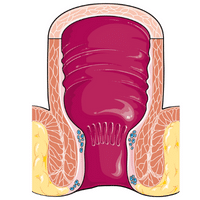
Definition: The anus is the muscular opening at the end of the digestive tract through which solid waste (feces) is eliminated from the body.
Function: It serves as a sphincter, helping control the release of waste materials, and plays a vital role in maintaining bowel continence.
2. Capillaries
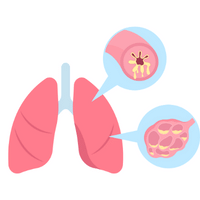
Capillaries are tiny, thin-walled blood vessels that connect arteries and veins. They play a vital role in exchanging oxygen, nutrients, and waste products between the bloodstream and body tissues.
3. Joints
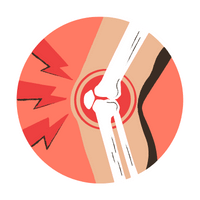
Joints are crucial connections where two or more bones meet. They allow our bodies to move, bend, and twist by acting like hinges. These vital structures provide flexibility, enabling actions like walking, bending, and dancing.
Synovial fluid, found in many joints, lubricates and cushions these connections, reducing friction and wear. Remember, taking care of your joints through regular exercise and a balanced diet helps maintain their health and flexibility.
4. Nerves
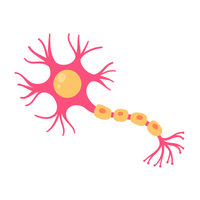
Nerves: Nerves are like the body’s electrical wiring. They’re crucial for sending messages between the brain and other body parts.
Nerves make you feel sensations, move muscles, and even control automatic functions like breathing and heartbeat.
Without nerves, your body wouldn’t know what’s happening or how to respond to the world around it. Protecting nerves, especially the spinal cord, is vital for staying healthy and mobile.
5. Skin
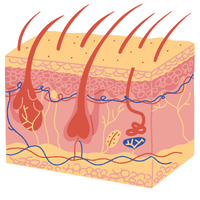
Skin is the body’s largest organ, serving as a protective barrier between your internal organs and the outside world. It shields you from harmful UV rays, bacteria, and physical injuries.
Skin is essential for temperature regulation, helping you stay cool by sweating and conserving heat in cold weather.
It’s also rich in nerve endings, allowing you to feel sensations like touch and pain, and it’s responsible for producing vitamin D when exposed to sunlight. Taking good care of your skin by keeping it clean and hydrated is crucial for overall health.
Key Highlights:
- Skin is your body’s primary defense against external threats.
- It regulates body temperature through sweating and heat conservation.
- Contains sensory receptors for touch and pain.
- Sun exposure aids in vitamin D production.
- Proper skincare is essential for overall health.
6. Tendons
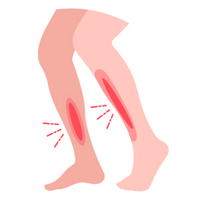
Tendons are tough, fibrous tissues that play a critical role in our bodies. They are strong bands that connect muscles to bones, essentially serving as connectors between the two.
Tendons have a significant job – they transmit the force generated by our muscles to our bones, allowing us to move our limbs and perform actions like walking, jumping, or even typing.
Without tendons, our muscles wouldn’t be able to control our bones, and we couldn’t move as we do. These connective tissues are essential for everyday activities, and they need to stay healthy to avoid injuries or strains.
Stretching and warming up before exercise can help keep tendons in good shape.
7. Arteries

Arteries are a vital component of the circulatory system, responsible for carrying oxygenated blood away from the heart to various parts of the body.
These muscular, thick-walled vessels play a crucial role in maintaining overall health. Arteries are defined by their unique structure, characterized by three layers: the inner endothelium, the middle smooth muscle layer, and the outer connective tissue layer.
8. Cerebellum
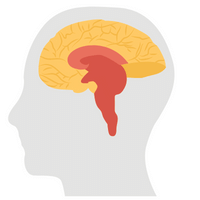
The cerebellum, often referred to as the “little brain,” is a remarkable body organ located at the base of the brain, just above the brainstem.
Its primary function is to coordinate and regulate motor movements, ensuring that our body’s actions are executed with precision and fluidity.
While it comprises only 10% of the brain’s total volume, it contains an astounding 50% of its neurons, highlighting its importance in motor control.
9. Liver
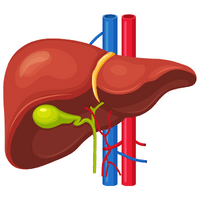
The liver is a vital organ located in the upper right abdomen. It serves crucial functions in the body, including detoxification, metabolism of nutrients, and synthesis of proteins. Additionally, it plays a central role in storing glycogen, producing bile for digestion, and regulating blood sugar levels.
10. Nasal Cavity
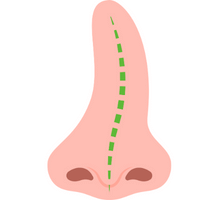
Nasal Cavity is the hollow, air-filled space within the nose. Its primary function is to filter, warm, and moisten incoming air, preparing it for the respiratory system. Additionally, the nasal cavity houses olfactory receptors, enabling the sense of smell.
11. Spleen
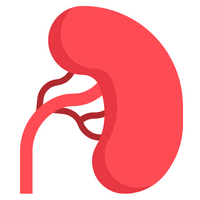
Spleen is a vital, fist-sized organ located beneath the ribcage on the left side. It serves two primary functions: filtering blood to remove damaged red blood cells and platelets, and acting as a reservoir for platelets and white blood cells. This organ also plays a role in immune responses, helping the body fight infections.
12. Tongue
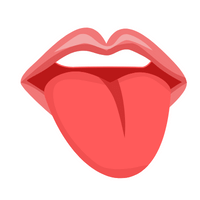
Tongue is a vital muscular organ located in the oral cavity. Its primary function involves taste perception, enabling us to savor various flavors. Additionally, the tongue aids in speech articulation and assists in the chewing and swallowing processes.
13. Appendix
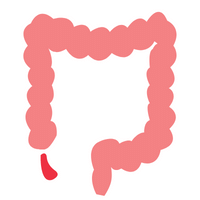
Appendix is a small, finger-shaped pouch located at the junction of the small and large intestines. While its exact function remains unclear, it’s thought to play a role in the immune system and possibly in maintaining gut bacteria. In some cases, it can become inflamed, causing appendicitis, a potentially serious condition requiring surgical removal.
14. Diaphragm
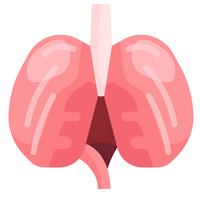
The diaphragm is a dome-shaped muscle located beneath the lungs, separating the thoracic and abdominal cavities in the human body. Its primary function is to facilitate the process of breathing by contracting and relaxing, which causes changes in thoracic pressure, allowing air to be drawn into and expelled from the lungs.
15. Lungs
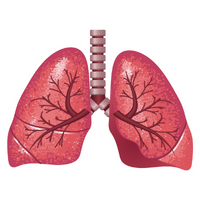
Lungs are vital respiratory organs in the human body. They facilitate the exchange of oxygen and carbon dioxide, crucial for sustaining life. These spongy, cone-shaped structures are responsible for drawing in fresh air and expelling waste gases, ensuring our body receives the oxygen it needs while removing harmful CO2.
16. Ovaries
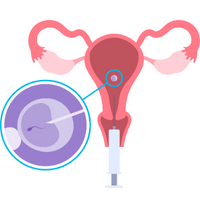
Ovaries are a pair of small, almond-shaped organs in the female reproductive system. They serve a critical role in the production of eggs (ova) and the secretion of essential hormones, including estrogen and progesterone, which regulate the menstrual cycle, support pregnancy, and influence secondary sexual characteristics.
17. Scrotum
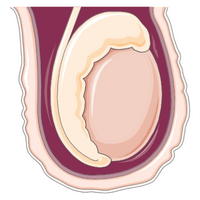
Scrotum is a pouch-like structure located below the penis in the male reproductive system.
Its primary function is to house and protect the testicles, which are crucial for sperm production. The scrotum’s ability to regulate temperature is vital, as it keeps the testes slightly cooler than body temperature for optimal sperm development.
18. Thyroid
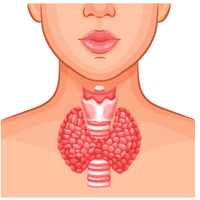
The thyroid is a small, butterfly-shaped gland located in the neck, just below the Adam’s apple. Its primary function is to produce and release hormones that regulate various metabolic processes in the body, including energy production and temperature control. An essential organ, the thyroid plays a critical role in maintaining overall health.
19. Adrenal Glands
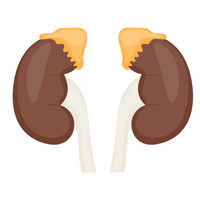
Adrenal Glands are small, triangular-shaped organs located on top of each kidney. These critical endocrine glands secrete hormones like cortisol and adrenaline, playing a vital role in regulating our body’s stress response, metabolism, blood pressure, and electrolyte balance.
20. Ears
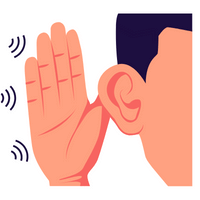
Ears are complex sensory organs responsible for hearing and balance. They consist of the outer ear, which collects sound waves, the middle ear, which amplifies and transmits these vibrations to the inner ear, where they are converted into electrical signals for the brain to interpret.
Ears play a vital role in our ability to communicate, enjoy music, and maintain equilibrium.
21. Larynx
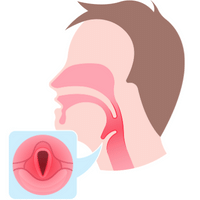
Larynx is the voice box, a crucial organ located in your neck. Its primary function is to produce sound by controlling airflow and vibrating vocal cords, allowing us to speak and sing.
Additionally, the larynx serves as a protective mechanism, preventing food and liquids from entering the airway during swallowing.
22. Oesophagus / Esophagus
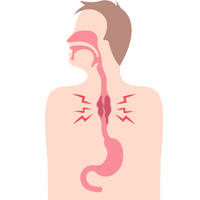
Esophagus is a muscular tube in your throat that plays a crucial role in digestion. Its primary function is to transport food and liquids from your mouth to your stomach through a series of coordinated muscle contractions called peristalsis. This process ensures that the contents you swallow reach the stomach safely, allowing for further digestion to take place.
23. Stomach
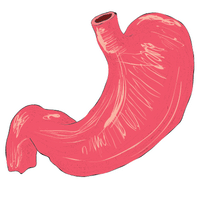
Stomach: The stomach is a vital organ in the human digestive system, resembling a J-shaped pouch located between the esophagus and small intestine. Its primary function is to digest food through the secretion of gastric juices, breaking down proteins and aiding nutrient absorption.
This muscular organ plays a pivotal role in the initial stages of digestion and is essential for overall nutrient absorption and body nourishment.
24. Trachea
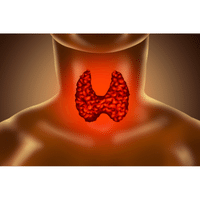
The trachea, often called the windpipe, is a vital organ in the human respiratory system. It serves as a flexible tube that connects the larynx (voice box) to the bronchi, allowing the passage of air into the lungs.
The primary function of the trachea is to provide a clear and unobstructed pathway for air to enter and exit the respiratory system, facilitating breathing and the exchange of oxygen and carbon dioxide in the body.
25. Brain
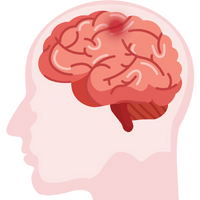
The brain is the central and most vital organ of the human body, serving as the command center of the nervous system.
Its primary function includes processing sensory information, controlling body movements, and facilitating complex cognitive functions such as thinking, memory, and emotion regulation.
26. Eyes
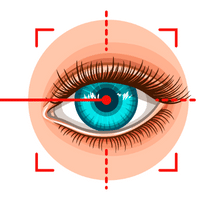
Eyes are complex sensory organs that allow us to perceive the world around us. They function by capturing light and converting it into electrical signals that our brain interprets as images. This remarkable organ plays a crucial role in our daily lives, enabling us to see colors, shapes, and depth, and helping us navigate and experience the beauty of our environment.
27. Ligaments
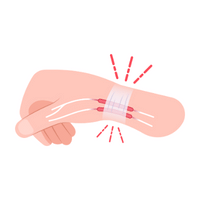
Ligaments are tough, fibrous connective tissues that link bones together at joints, providing stability and preventing excessive movement. These crucial structures support and reinforce the joints, helping maintain proper alignment and limiting the risk of injury.
28. Penis
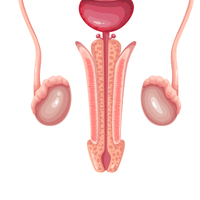
The penis is a male reproductive and urinary organ. It serves a vital role in sexual reproduction by delivering sperm to the female reproductive tract during intercourse. Additionally, it expels urine from the body through the urethra.
29. Spinal Cord

The spinal cord is a vital bundle of nerve tissue running down the spine, connecting the brain to the rest of the body. It serves as a communication highway, relaying electrical signals between the brain and body parts, enabling movement, sensation, and reflexes.
30. Thymus Gland
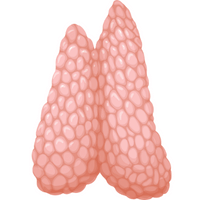
The Thymus Gland is a key part of the immune system, located in the chest. It plays a vital role in the development and maturation of T cells, which are crucial for immune defense against infections and diseases.
31. Bones
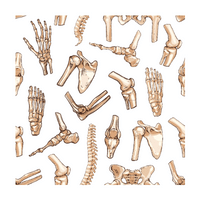
Bones are the structural elements of the body that form the skeleton, providing support, protection, and mobility. They also serve as a reservoir for minerals like calcium and phosphate, essential for bodily functions. Through hematopoiesis in bone marrow, bones contribute to the production of blood cells.
32. Fallopian Tubes
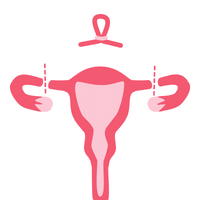
Fallopian Tubes are a pair of slender, tube-like structures in the female reproductive system. These vital pathways play a key role in transporting eggs (ova) from the ovaries to the uterus. Fertilization of the egg by sperm usually occurs within the fallopian tubes, initiating the journey towards pregnancy.
33. Lymph Nodes
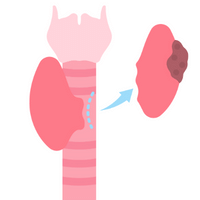
Lymph Nodes are small, bean-shaped organs found throughout the body. They play a crucial role in the immune system, filtering lymph fluid and trapping harmful substances like bacteria and viruses.
34. Pancreas
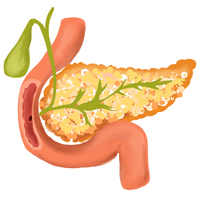
The pancreas is a vital organ located behind the stomach. It plays a dual role in the body, serving as both an endocrine gland and an exocrine gland. As an endocrine gland, it produces hormones like insulin and glucagon, which regulate blood sugar levels. As an exocrine gland, it releases digestive enzymes into the small intestine to aid in the digestion of fats, proteins, and carbohydrates.
35. Small Intestine
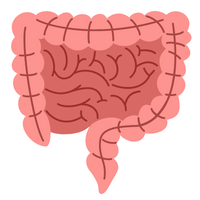
The Small Intestine is a vital organ in the digestive system that plays a crucial role in absorbing nutrients from the food we eat. This long, coiled tube is where the majority of digestion and nutrient absorption occur, thanks to its specialized lining and abundant villi.
These finger-like projections increase the surface area for efficient absorption, ensuring that essential nutrients such as vitamins, minerals, and amino acids are absorbed into the bloodstream to nourish the body.
36. Ureters
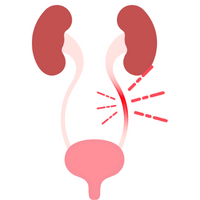
The ureters are narrow tubes that transport urine from the kidneys to the bladder. These vital organs play a crucial role in maintaining the body’s urinary system, ensuring proper waste elimination and fluid balance.
37. Bronchi
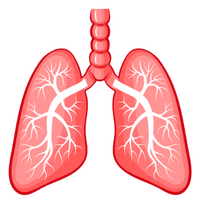
Bronchi are the major airways in the respiratory system, branching off from the trachea and leading into the lungs. These tube-like structures are responsible for carrying air in and out of the lungs, facilitating the exchange of oxygen and carbon dioxide during the process of breathing.
38. Genitals
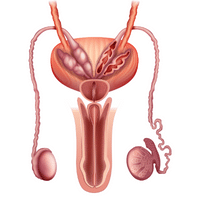
Genitals refer to the reproductive organs of an individual, responsible for sexual reproduction and the transmission of genetic material. In males, the genitals include the penis and testes, while in females, they encompass the vulva, vagina, uterus, and ovaries. These organs play a crucial role in fertilization and the continuation of the human species.
39. Large Intestine
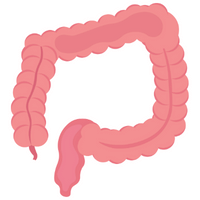
The Large Intestine, also known as the colon, is a vital body organ in the digestive system. It plays a crucial role in absorbing water and electrolytes from digested food, forming and storing feces, and facilitating their elimination from the body.
40. Pharynx
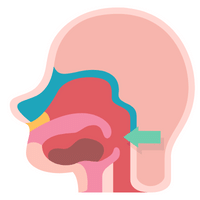
The pharynx is a muscular tube connecting the nasal cavity and mouth to the esophagus and larynx. It plays a vital role in both the respiratory and digestive systems, serving as a pathway for air and food.
41. Salivary Glands
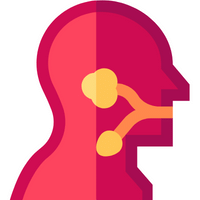
Salivary Glands are essential organs in the mouth that produce saliva, a fluid containing enzymes that kickstart digestion. Their primary function is to moisten and break down food, making it easier to swallow and digest.
42. Urethra
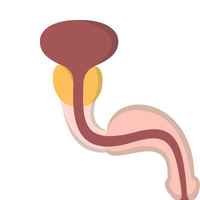
The urethra is a vital tube-like organ in the human body responsible for carrying urine from the bladder to the outside of the body. It plays a crucial role in the urinary system, enabling the elimination of waste products.
43. Bladder
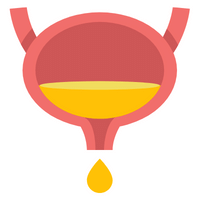
The bladder is a hollow muscular organ located in the lower abdomen. Its primary function is to store and control the release of urine produced by the kidneys, helping to maintain urinary continence until an appropriate time for elimination.
44. Gallbladder
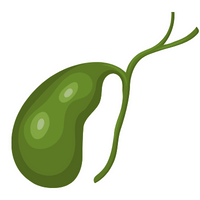
The gallbladder is a small, pear-shaped organ located beneath the liver. Its primary function is to store and concentrate bile, a digestive fluid produced by the liver. When we consume fatty foods, the gallbladder releases bile into the small intestine to aid in the digestion and absorption of fats.
45. Lymphatic vessel
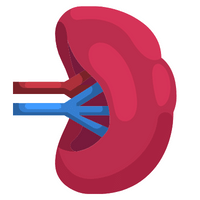
Lymphatic vessels are a crucial part of the lymphatic system, responsible for carrying lymph—a colorless fluid containing immune cells and waste products—throughout the body. These vessels help maintain fluid balance, absorb fats from the digestive system, and play a vital role in immune defense by transporting immune cells to fight infections.
46. Placenta
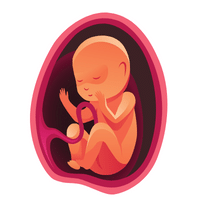
The placenta is a remarkable organ that develops during pregnancy in the uterus. It serves as a vital connection between the mother and the developing fetus, allowing for the exchange of nutrients, oxygen, and waste products.
The placenta plays a crucial role in supporting the growth and development of the fetus by providing a barrier against harmful substances while facilitating essential nutrient transfer.
47. Skeletal Muscles
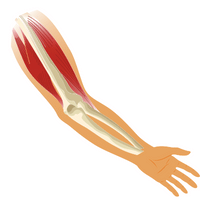
Skeletal muscles are a type of body organ responsible for voluntary movement. Composed of muscle fibers, they attach to bones through tendons, enabling us to walk, run, lift, and perform various activities.
These muscles play a crucial role in maintaining posture and generating the
48. Uterus
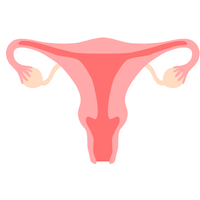
The uterus is a pear-shaped muscular organ in the female reproductive system, located between the bladder and the rectum. Its primary function is to house and nurture a developing embryo into a fetus during pregnancy.
The inner lining called the endometrium, undergoes cyclic changes during the menstrual cycle and is crucial for the implantation of a fertilized egg.
49. Bone Marrow
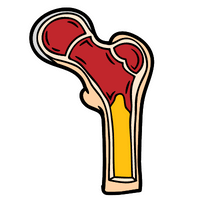
Bone Marrow is a spongy tissue found in the cavities of bones. It plays a crucial role in producing blood cells, including red blood cells for oxygen transport, white blood cells for immune defense, and platelets for clotting.
50. Heart
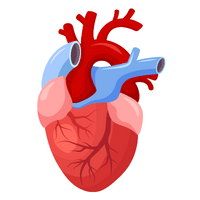
The heart is a vital organ that pumps oxygen-rich blood throughout the body, supplying cells with nutrients and removing waste products. Its rhythmic contractions ensure continuous circulation, maintaining bodily functions and overall health.
51. Mouth

The mouth is the opening in the face through which we eat, speak, and breathe. It plays a vital role in ingestion of food and the initial stages of digestion, where saliva mixes with food to begin the process.
52. Prostate
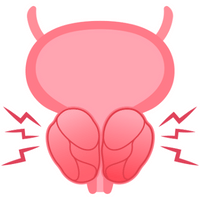
The prostate is a small, walnut-sized gland found in males. Its function involves producing and secreting a fluid that nourishes and protects sperm, aiding in their mobility and survival. This fluid is a crucial component of semen, supporting the reproductive process.
53. Seminal vesicles
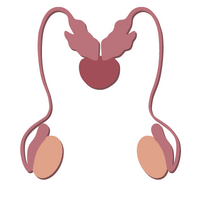
The seminal vesicle is a paired male reproductive organ responsible for producing seminal fluid. Located behind the bladder, its main function is to secrete a significant portion of the fluid that makes up semen, which nourishes and protects sperm as they travel through the reproductive tract.
54. Vulva
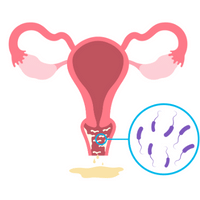
The vulva refers to the external female genitalia, encompassing structures like the labia majora, labia minora, clitoris, and vaginal opening. Its primary function includes protecting the internal reproductive organs and facilitating sexual arousal.
55. Bulbourethral glands
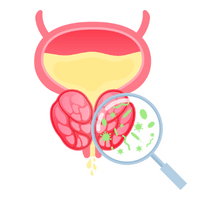
Bulbourethral glands, also known as Cowper’s glands, are small organs located beneath the prostate gland in males. Their function involves producing a clear, viscous fluid that lubricates and neutralizes the urethra, enhancing sperm survival and protecting them from acidic environments during ejaculation.
56. Hair follicle
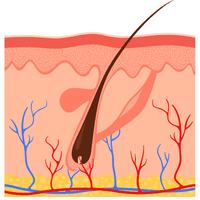
The hair follicle is a tiny, tube-like structure in the skin that produces and houses hair. Its primary function is to generate hair growth by nurturing and supplying nutrients to the hair shaft.
57. Mesentery
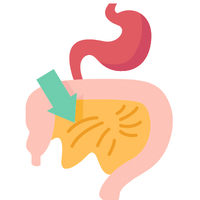
The mesentery is a continuous fold of tissue that attaches the intestines to the back wall of the abdomen. Its function involves providing support and a pathway for blood vessels, nerves, and lymphatics to reach the intestines, aiding in their proper functioning.
58. Pineal Gland
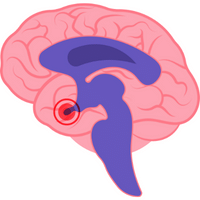
The Pineal Gland, a small endocrine organ nestled deep within the brain, plays a vital role in regulating the sleep-wake cycle and producing the hormone melatonin. This gland helps synchronize our internal body clock with the natural rhythm of day and night, influencing our sleep patterns and overall circadian rhythms.
59. Subcutaneous tissue
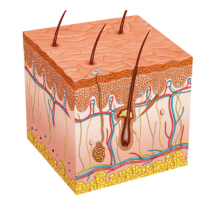
Subcutaneous tissue is the layer of fat and connective tissue located beneath the skin. It functions as a cushion to protect our organs and regulates body temperature by storing and releasing energy.
This tissue also plays a role in insulation and helps in absorbing shocks, providing essential support to the skin and the body as a whole.
60. Veins
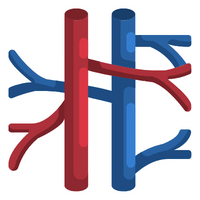
Veins are blood vessels that carry deoxygenated blood from various parts of the body back to the heart. They play a crucial role in the circulatory system, aiding in the return of blood to the heart for oxygenation.
61. Colon
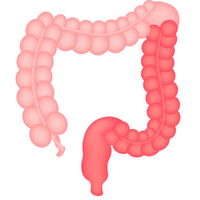
The colon is a vital organ in the digestive system, primarily responsible for absorbing water and electrolytes from the indigestible food matter, forming feces, and facilitating their elimination from the body.
62. Hypothalamus
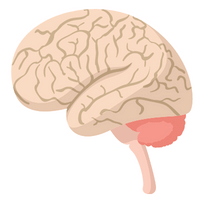
The hypothalamus is a vital region in the brain that plays a central role in regulating various physiological processes including body temperature, hunger, thirst, sleep, and hormone production.
It acts as a bridge between the nervous system and endocrine system, maintaining overall homeostasis and orchestrating the body’s responses to internal and external stimuli.
63. Mammary Glands
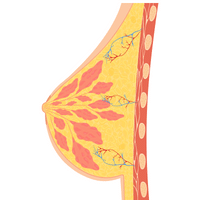
Mammary Glands are specialized body organs in mammals responsible for producing milk to nourish offspring. Found mainly in females, these glands undergo significant changes during pregnancy and lactation, providing essential nutrients and immune factors for newborns.
64. Pituitary Gland
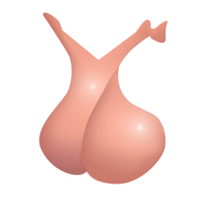
Pituitary Gland: The pituitary gland, often referred to as the “master gland,” is a tiny but crucial organ located at the base of the brain. Its primary function is to regulate and control various hormones throughout the body, influencing growth, metabolism, reproduction, and many other essential bodily processes.
65. Teeth

Teeth are hard, calcified structures in the mouth that play a crucial role in chewing, digestion, and speech. These small but mighty organs are responsible for breaking down food into smaller pieces, aiding in the initial stages of digestion, and shaping the sounds we use for communication. Proper dental care is essential to maintain their function and overall oral health.
66. Vagina
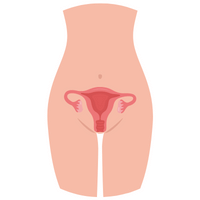
The vagina is a muscular, tubular organ in the female reproductive system. Its primary function is to serve as a passageway for menstrual blood to exit the body and for sexual intercourse. It also plays a crucial role in childbirth, allowing the baby to pass through during delivery.
67. Cervix
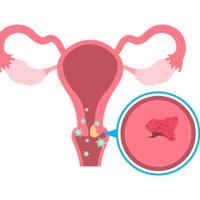
The cervix is a crucial part of the female reproductive system. This narrow, tube-like structure connects the uterus to the vagina. Its primary function is to act as a barrier and gateway between these two organs, regulating the passage of menstrual blood, sperm, and serving as the birth canal during childbirth.
The cervix also plays a vital role in protecting the uterus from infections and is a key focus in women’s health screenings like Pap smears.
68. Interstitium
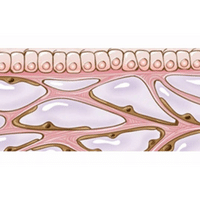
Interstitium is a body organ that’s not commonly recognized, but it’s vital. It’s a network of fluid-filled spaces found throughout the body’s connective tissues.
Its function includes supporting and protecting our organs, facilitating the flow of nutrients and immune cells, and playing a role in tissue health and repair.
Understanding the interstitium is crucial for grasping the complexity of our internal environment.
69. Nose
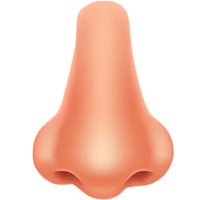
The nose is a prominent facial feature responsible for our sense of smell. It serves as an essential part of the respiratory system, filtering and moistening the air we breathe while also housing the olfactory receptors that enable us to detect various odors.
70. Parathyroid Glands
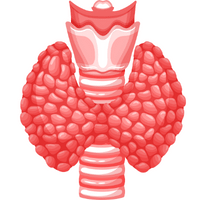
Parathyroid Glands are tiny, pea-sized organs located in your neck, near the thyroid gland.
They play a crucial role in regulating calcium levels in your body, ensuring bones stay strong and nerves and muscles function properly.
These glands release parathyroid hormone (PTH), which increases calcium levels in the blood by prompting calcium release from bones and enhancing its absorption in the intestines, ensuring your body’s calcium balance remains in check.
71. Tonsils
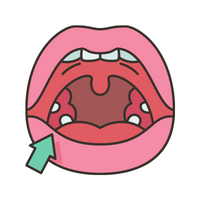
Tonsils are small, soft tissue masses located at the back of the throat. They serve as the body’s first line of defense against harmful pathogens, helping to trap and filter out bacteria and viruses that enter the mouth and nose.
These immune system warriors play a crucial role in protecting us from infections and are part of the lymphatic system.
72. Vas deferens
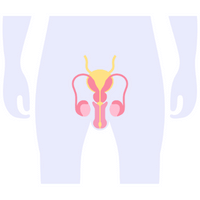
Vas deferens is a crucial male reproductive organ. It’s a long, muscular tube that transports sperm from the testes to the urethra, enabling their journey during ejaculation. This tiny but mighty structure plays a pivotal role in fertility and the continuation of the human species.
73. Clitoris
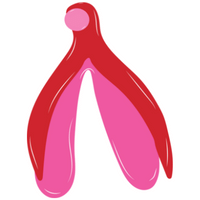
Clitoris: The clitoris is a small, highly sensitive organ located at the top of the vulva, in the female reproductive system.
Its primary function is to provide sexual pleasure and arousal in women.
Despite its relatively small size, the clitoris has thousands of nerve endings, making it a key player in the experience of sexual pleasure.
74. Kidneys
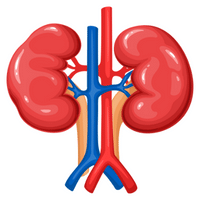
Kidneys are vital bean-shaped organs located in the lower back. Their primary function is to filter waste and excess fluids from the bloodstream, creating urine for elimination. Kidneys also help regulate blood pressure, electrolyte balance, and red blood cell production.
75. Nails

Nails are thin, protective plates made of keratin that cover the fingertips and toes. Their primary function is to provide support and protection to the sensitive fingertips, aiding in grasping objects and performing delicate tasks.
Nails also reflect our overall health and can be a window into underlying medical conditions when changes in color, texture, or shape occur.
76. Rectum
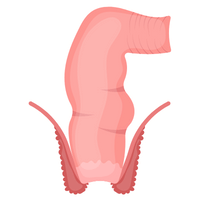
The rectum is the final portion of the large intestine, serving as a temporary storage area for feces before elimination. Its main function is to facilitate the expulsion of waste from the body during bowel movements.
77. Testes
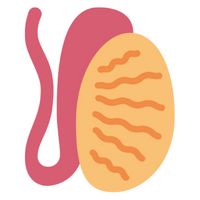
Testes are the male reproductive organs found in the scrotum. Their primary function is sperm production and testosterone secretion, crucial for fertility and secondary sexual characteristics in males.
78. Vestigial organ
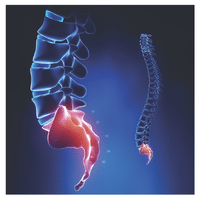
A vestigial organ is a structure within the body that has lost its original function through evolution. These organs, like the human appendix, no longer serve a significant purpose and are considered remnants from our ancestors’ evolutionary past.
Relate posts:
- 50 Body Parts Name Female
- 100 Body Parts Name Female
- Woman Body Parts Name
- Nabhi Body Parts Name
- 100 Human Body Parts Names
- Body Parts Name in English with Pictures
- Cat Anatom
- Dog Anatomy
- Almond Skin Tone With Shades